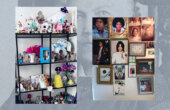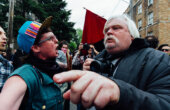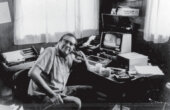Rereading My Childhood
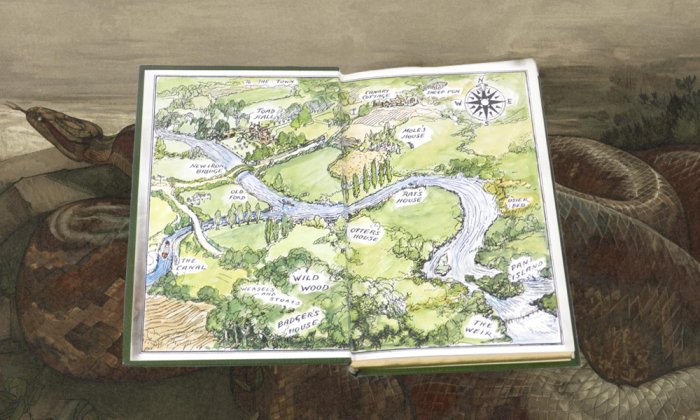
All childhood is an imagined world. It’s rare to find a memoir of childhood reading that does not begin with, or at least include, a love of maps; the places of fiction define and extend our own.
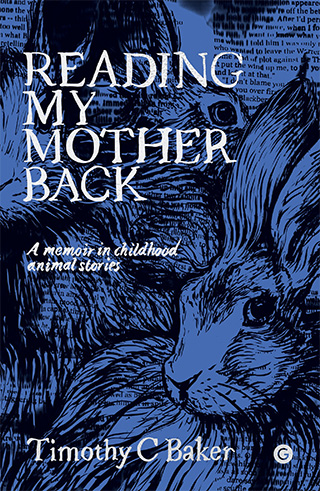
Alison Bechdel, in her graphic memoir (or “tragicomic”) “Fun Home,” provides several maps of her childhood home in Pennsylvania, some topographic and some more schematic, illustrating natural and built features, and the relation between various family members. The most complete map, showing almost the whole town, occupies the lower half of a page, two-thirds of the way through the book. The top half of the page is a reproduction of the map from Kenneth Grahame’s “The Wind in the Willows”; Bechdel mentions taking it from a coloring book, although it is almost identical to the endpapers of my own edition of the novel, as illustrated by E. H. Shepherd. Bechdel has carefully, accurately redrawn the map, making some of its features more clear. The visual parallels between the two maps are obvious, but Bechdel articulates them all the same; the maps show the same iron bridge, the same ford, the same area filled with weasels and stoats, or people Bechdel’s family disliked.
But on the facing page she presents the map again, closer-up, pointing out that if you look closely enough, you can see Mr. Toad driving along in his motorcar. And she’s right; going back to my own volume, if I look very closely there he is, something I had never noticed in all my years of reading Grahame’s novel. For Bechdel this has a particular significance: The road where Mr. Toad is driving is paralleled by the road where, years later, her father will be hit by a truck, one of the traumas that underpins her text. But she also points out that there is life, animation, within the map. Maps are not static: They tell their own stories and ours, too.
No book is encountered on its own. We always read through the prism of the other books we’ve read, the lives we’ve lived.
Far more than the picture books I read a few years earlier, “The Wind in the Willows” provides a map for, it seems, a great many child readers. In Lynda Barry’s own graphic memoir “One! Hundred! Demons!” she laments, at the very end, that she worried she could never become a writer because she didn’t know Grahame’s text, and seemingly every other writer did. Lucy Mangan, in “Bookworm,” her memoir of childhood reading, describes herself as an “idiot” for ruling out Grahame’s work, along with every other talking animal story. But for so many others, adults and children, ever since its initial publication, “The Wind in the Willows” is not just a shared reading experience, but a shared place. In a frequently cited letter from January 1909, Theodore Roosevelt writes, on White House stationery, that he feels much the same about going to Africa as the seafaring rat feels when he describes his travels. And those of us less entranced by mass slaughter and colonialization might feel similarly. Our ideas of life on a river, or on the road, or in a wonderful hole in the ground or a great manor, all seem to stem from this novel. It is familiar and foreign at the same time; Grahame writes of a vanished world, a pastoral idyll that may never have existed, in which the details are both implausible and tangible.
For the surprising thing about “The Wind in the Willows” is the problem of scale. That smaller animals — toads and water rats and moles — might consort with slightly larger animals such as badgers seems perfectly plausible. That each of our main characters is known by species seems a bit odd — surely there must have been a mole mother and a mole father, a neighboring rat? — but this is not wholly unusual, and leads to Mole’s great war cry, “A Mole! A Mole!,” which is probably my favorite moment in the book, although my father would no doubt go for the phrase “whack ’em and whack ’em and whack ’em,” which was something of a family mantra, even if there was never a particular “them” to whack. But that toads can drive fancy cars, that toads and moles can both wear the clothing of washerwomen, that weasels can carry what appear to be full-sized weapons — this is not only difficult to justify with our knowledge of animal lives, but challenges our very understanding of the animals’ physical size.
The relation between animals and humans in the novel is similarly complex: In a brief, almost dystopian moment Grahame mentions that the Wild Wood is on the site of a prior human civilization, as humans are more likely to vanish from a place than the animals, and yet there are certainly many humans in the novel. The humans keep animals as pets, as the discovery of a bird in a cage reveals, and yet are not terribly surprised to find themselves in conversation with animals either, treating them almost as equals. The rules of the novel are strangely inconsistent: If Mole is large enough to wear human clothing, his hole in the ground must itself be relatively large, and yet there is no suggestion that it is. There are just enough indications that our protagonists are animals that we must, in reading, take it seriously, and yet there is, for much of the novel, no reason to think of them as anything other than human.
And the glory of the novel, of course, is that it doesn’t matter. It isn’t simply that we take the driving abilities of toads seriously, but that we accept whatever is on the page in front of us, without wondering for very long how it accords with what we found a few pages before. And this is just as true as the narrative overall. Many readers will remember the story of Mr. Toad and his adventures, some will remember the far more affecting scenes with Rat, Toad, and Badger, but few might remember the mystical vision of Pan, or the chapter devoted to the unnamed seafaring rat who inspires reveries in Rat himself, the final two episodes of the novel to be written, and perhaps the most beautiful. “The Wind in the Willows” is a curious text to reread, because parts of it seem as if we’ve always known them, and parts seem wholly new to us. What we might remember as a story, a narrative, turns out to be a series of fragments.
In a brief, almost dystopian moment Grahame mentions that the Wild Wood is on the site of a prior human civilization, as humans are more likely to vanish from a place than the animals.
It is the same with our own lives, of course. We remember, or think we remember, a story, a progression that takes us from where we were to where we are now. But however hard we look, we find only pieces that refuse to cohere.
The act of rereading, as many critics have noted, evokes two readers: the one who is reading the work and the one who read it first, what Wendy Lesser, in “Nothing Remains the Same,” calls “a little reflected face” of “the person you were when you first read the book.” Revisiting the books we read in childhood is a way of revisiting our childhood selves. Often this provides a sense of continuity; we may be charmed to find ourselves moved by a text in the same way, we may be delighted that our taste in fiction then accords with our taste in fiction now. We might be surprised to find that a text informed the way we see the world to such an extent. I read “The Hobbit” every three months as a child, and then didn’t read it for a decade, and returning to it one gloomy day at university I was shocked to realize how many stories there were in it; it had filled my memory so comprehensively that I couldn’t quite understand how so many characters and set-pieces all fit within several hundred pages. Surely the adventures in Mirkwood, so rich in my imagination, must have required a novel of their own, and couldn’t be part of the same story as Bilbo’s later encounters with Smaug.
And of course the opposite is just as true. We might be baffled that we enjoyed a text we now see as mediocre. We might worry at how poorly our childhood reading reflected the diversity of the world, and wonder what that might say about us. We might find ourselves faced with moments of discomfort, wondering how much the orthodoxies of the past affected our own way of seeing the world. We might take the opportunity to praise our intellectual superiority in the present, out of some deeply misplaced sense of competition with our former selves. Sometimes, in assembling these fragments, I’ve returned to a much-loved text from childhood and been entirely unable to understand what made me love it years ago. Books that once seemed rich and full now seem flat, didactic, undeveloped.
But rereading is far more than this tension between continuity and discontinuity, or between stability and change, as Patricia Meyer Spacks frames it in her book “On Rereading,” for we read not simply as adult and child selves, isolated from the world, but as people who have been enmeshed in it, who have had other experiences, who have read other books. The critic Matei Călinescu uses the term “circular haunting” to describe this potential paradox. No book, he says, is encountered on its own. We always read through the prism of the other books we’ve read, the lives we’ve lived. And when we reread, our own act of reading becomes such a prism.
It is not simply that we cannot go back to a text as if for the first time; it is that that first reading, and everything we have read since, informs our rereading, and the rereading changes how we remember the first reading. I cannot read “The Hobbit” now without adding to it my memories of reading “The Lord of the Rings,” of seeing the film of “The Return of the King” in the cinema on a Christmas morning and sobbing with relief that it had been released before my mother died. All of those experiences are now part of the original. To misquote Heraclitus, you cannot read the same book twice. While Spacks argues that rereading childhood books often invokes a sense of nostalgia, a moment of being able to be swept back into a familiar world, we are also always haunted by the sense that not only have we changed, but the book itself is rendered different just by the fact that we, now, are rereading it.
And this dual sense of permanence and change is one of the glories of “The Wind in the Willows,” a book that is not, perhaps, about rereading, but is about how we revisit the places we love, and find them strange, yet no less longed for. The novel, you’ll recall, opens with change. The Mole is cleaning his house, and as much as he cleans, he feels himself called by something else, a sense of adventure borne in the spring air, and so he departs. Indeed, he “scrooges” out of his hole, and if we have since read Dickens, we bring a set of associations to the word we did not previously have. And he goes to the river, and to the world.
For this is not only a story of leave-taking, but homecoming. Four chapters later Mole comes home, and, unlike Toad, he does not compose a song about it. Mole and Rat pass by Mole’s home, and he is filled, in one of the most emotionally charged scenes in the book, with an indescribable longing. Grahame’s narrator laments that, as humans, we do not have the sense of “intercommunication” with a place that the Mole has. But oh, it rends my heart. I know this loss, this sense of expulsion from the world, this feeling that wherever one is, one must be homesick. And his home, Grahame says, is also mole-sick. His home, thinks Mole, is shabby, and yet he had been happy there, and even more, his home had itself been happy, and it misses him. It is not only Mole who longs for home, but his home that longs for him, a true companionship.
And he tries to resist, he really does. He walks past, he holds firm, he refuses to explain himself to Rat, but finally, in a violent “paroxysm of grief” he admits his desire. And his home welcomes him in. He and Rat prepare food, and tidy, and welcome in caroling field mice, and domestic bliss is achieved.
There are many homes in the novel, from the grandeur of Toad Hall to the propriety of Badger’s sett, but there is no more homely place than Mole’s, for there the desire to inhabit and the desire to be inhabited comingle. The home and the dweller have a fully symbiotic relationship, in which each is complete only with the other.
And so it sometimes is with our rereading. We pass over a book we once knew well, and we are sure that we have moved on in the world, that our new adventures are so much richer that this text cannot speak to us. And yet we cannot move forward. We are called back. And the book welcomes us in, and much has changed, and much has not. We are who we were when first we read the book, and who we are now, and we learn to embrace our own multiplicity, just as the book, if it’s good enough, if it’s true enough, embraces its own many readings. Grahame’s novel, for all its episodic structure, is unified by a sense of constant yearning, a yearning for home and a yearning for away, and neither can quite be satiated and so we, too, yearn for the new and the familiar, always moving, always wishing to stay in place.
We are homesick not only for the places we left, but for the people we were when we left them.
The critic James Wood adopts a word from Freud, “afterwardness,” to describe this phenomenon. The choices he made when young, the choice he made to leave his home, may not have seemed large at the time, and yet, he says, the “process of retrospective comprehension” that allows him to reflect on his leaving is what “constitutes a life.” We cannot unmake our choices. We cannot go home. And we cannot, in the end, even know if our leave-taking was the right choice; it was simply the one we made. And yet that desire to go back, to look again, underpins all our self-comprehension. We are homesick not only for the places we left, but for the people we were when we left them. And this is the crux of rereading, too: It is not a form of nostalgia, but homesickness. It is a moment of afterwardness.
Reading the story now I cannot find myself particularly excited about the world of Toad. He is a tiresome sort of hero, and even as a child I could not understand why he would leave behind a perfectly satisfactory caravan for the thrill of a motor car. But I do want to live in a world where, if I listen hard enough, I can find Pan, with a lost baby otter nestled at his feet
I struggle now, reading the novel, to come to terms with its social world. The novel does not merely depict a homosocial universe, but one predicated on gender and class assumptions that I repudiate; the only role available to women, besides some very unimportant mothers, is that of washerwoman, and there are few worse fates imaginable. The conservatism of Badger, which we seem meant to admire, and the flashy, carefree wealth of Toad, which is a bit more ambiguous, would both disturb me in some way if I encountered them now among human peers. And this unsettling preponderance of men, mostly white, mostly English, in my childhood reading puzzles me now. The suburban Baltimore of my early childhood was, in retrospect, surprisingly white; the Vermont of my later childhood almost entirely so. And this was absolutely reflected in my reading.
In her own brief memoir of rereading, Dionne Brand discusses “the complicated ways of reading and interpretation that are necessary under conditions of coloniality.” Reading the Western canon as a child, she suggests, is to encounter repeatedly a “we” that is based on the exclusion of others; she describes searching not for inclusion, but simply to be addressed. Unlike Brand, I read and write from a majority position; the texts I describe were written for, and often about, readers like me. And yet even as a child, and more especially now, I recoil from the assumptions I find throughout these works, their implicit ideas concerning race, gender, class, and sexuality. I want to insist that these aspects were not formative, although of course they were. I want to make excuses for their authors. I want to distance myself. I want to pick and choose which elements I return to, and which I discard; I do not like the complications of this literary legacy. And this might be why, looking at these texts now, I’m drawn to the ones that center on animals, as they feel like me and not like me.
Certainly I wasn’t to find myself in a novel until several years later, when I read “Jane Eyre” for the first time. The class was divided, in a way I hope would not be sanctioned now, by gender, and all the boys were assigned Robert Cormier’s “The Chocolate War” and the girls got to read Brontë, and I opted for the latter. And there is still no scene in all of literature where I see myself as clearly as in the opening pages of “Jane Eyre,” as she sits in the windowseat, reading about birds. I never much cared about Rochester or Bertha or all the grand romance of the central narrative. I just liked the story of a lonely child who found solace in reading, and very much wanted Jane and Helen Burns to find a lasting love. The world of boys’ stories, as much as I read them voraciously, was almost a form of anthropological study, and this was, perhaps, easier when men were framed as animals.
The world of boys’ stories, as much as I read them voraciously, was almost a form of anthropological study, and this was, perhaps, easier when men were framed as animals.
And this was clearly the case with my own local celebrity, Rudyard Kipling. While Kipling is thought of as a writer of England and India, the great champion of the colonial project, he lived for some time just down my street, in a house called Naulakha, which he designed in 1892. The house was built to look like an overturned boat, although I’ve never really seen it as such. The house is now owned by the National Trust, and you can visit his study, and in that study you can find a fireplace, which was rebuilt by my father. I did not slake the quicklime mortar for that house, although I did for several other historical construction projects my father worked on around the same time. Kipling was, for me, a local writer, and it was in this house that he wrote “The Jungle Books,” among other texts. He lived there for five years, until a fight with his family across the street, in what was and still is called the Red House. If Grahame’s world paralleled my own but was also removed, Kipling’s world, or at least the world of his writing, was visible any day I wanted to see it.
Kipling did not think highly of my little town. He writes simply, in his peculiar autobiography “Something of Myself,” “What might have become characters, powers and attributes perverted themselves in that desolation as cankered trees throw out branches akimbo, and strange faiths and cruelties, born of solitude to the edge of insanity, flourished like lichen on sick bark.” I still don’t know if I agree with this description, although it amuses me. But the world he created in that house, a world of freedom and law — the Law of the Jungle — a world of cruelty and unexpected sympathy, still seems familiar.
Kipling’s work, for the following generation, was something of a litmus test, a ground for political awakening. T. S. Eliot, W. H. Auden, and George Orwell all write of their childhood love for Kipling and their growing realization that in his work there is something alien, troubling, distasteful. C. S. Lewis details how on reopening a work of Kipling’s he is initially enchanted, and then soon finds himself “sick, sick to death of the whole Kipling world,” which he describes as “unendurable — a heavy, glaring, suffocating monstrosity.” Readers who have not looked at “The Jungle Books” since childhood might find that their memory is founded at least as much on the Disney animation, and that there is much there to trouble them. It is not simply that, like “The Wind in the Willows,” the central story is scattered among other fragments, that there are poems and stories in which Mowgli does not feature at all, and are set as far away from India as the Bering Sea. It is that the entire tale is infused with ideas of death and power. There are few stories in the collection as striking as “Red Dog,” which depicts Mowgli’s rise to power, the pleasantest part of his life, Kipling writes, because “all the Jungle was afraid of him.” The story depicts what can only be described as a genocide, where many of the heroic wolves, and all of the villainous red dogs, or dholes, are slaughtered. Whether or not this was intended as a metaphor for colonial rule, the cruelty is astonishing. Much like reading “Babar,” I am alarmed to find that the stories I took to be straightforward tales of education are predicated on the destruction of others; I wonder, even now, how seeing my life in relation to these tales makes me complicit.
Just as he admired Grahame, Theodore Roosevelt enjoyed Kipling’s animal stories, which he approached as moral fables, perhaps supporting his own ideas of dominance. It might seem peculiar that a president, even one known for his interest in — and destruction of — the natural world, would comment on such texts, and yet both the texts and the president were caught up in a larger discussion of what it meant to write stories about animals at all. After Kipling’s success, animal stories proliferated. Ernest Thompson Seton’s “Wild Animals I Have Known” was a staple of my childhood reading, alongside his adventure story “Two Little Savages” and his Boy Scouts handbook, from which I taught myself, unsuccessfully, to tie knots. Seton introduces his work with a note about the nature of animal stories: “The fact that these stories are true is the reason why all are tragic. The life of a wild animal always has a tragic end.” The 1970s edition I have now, from the New Canadian Library, makes the same point on its cover, emphasizing the scientific realism of the writing. Certainly as a child I believed these stories, and I believed their tragedy.
I am alarmed to find that the stories I took to be straightforward tales of education are predicated on the destruction of others.
Seton, along with William J. Long, was one of a group now called the “nature fakers”; as much as they claim to shy away from anthropomorphism, they present nonhuman animals as moral guides for humans. Some of their stories are famously preposterous: As much as they claim all of their work is based on close observation, stories of, say, a fox riding a sheep are so unusual that they attracted widespread scorn, not least from Roosevelt. As Ralph H. Lutts argues, Seton and Long emerged at a moment when Americans were forced to reconsider the relation between humanity and nature, a conversation that continues to this day. Seton and Long, he writes, argue that nature is fundamentally moral, and “it is to nature that we must look for ethical guidance.”
These debates are not as clear in Kipling and Grahame, but form the context for their texts’ reception. There must be something in their animal stories we can learn, some way of applying these lessons to ourselves. “The Wind in the Willows,” for an American child, must be one of the most escapist texts available, and yet we need to think about what escape might mean, and how we are still situated in the world.
Kipling and Grahame both present worlds in which the barriers between human and nonhuman are blurred. And they are worlds of travel, of opportunity. But the constant yearning in “The Wind in the Willows” is replaced in “The Jungle Books” with constant threat. Grahame’s weasels and stoats are disruptive, to be sure, but easily defeated; Kipling’s dholes are far more vicious. Kipling’s stories end in death, in woe, while Grahame’s end in triumph. And yet the two authors, whom I encountered at the same time, strike me as fundamentally similar. Both write out of their own unhappiness, whether in terms of Grahame’s longing for the company of men or Kipling’s own legacy of abuse, and his quite miserable childhood. Both see in the construction of order, of what they might call civilization, a way forward. But civilization, they find, is a fragile thing.
And this was, for better or worse, my own world. I don’t remember much of my schooling from this time. I remember very few friends. Indeed, when we moved to Vermont neighbors observed, with no little concern, that if I were playing in the yard and a car drove by I would hide behind the nearest tree, afraid of abduction, of threat, of the unfamiliar. My mother was still mobile, and I remember brief hikes up a local hill, walks and picnics in local graveyards, and yet almost all of my memories of her are set indoors, just the two of us, talking at the kitchen table my father had made years before from the remnants of a bridge. I did not know, then, why she might be afraid, and I am wary of rereading her actions in too definitive a way. But already, having achieved to some degree the life she had imagined for herself, she was beginning to draw in, to restrict her world, to privilege the familiar over the new.
At the end of the chapter “Wayfarers All,” after Rat has listened to the stories of the seafaring rat, he sinks into a deep depression. He cannot explain to Mole what he has heard, how much these tales of the outside world have appealed to him. Mole prescribes him some poetry, and at last Rat slowly begins to write, the beginnings, Grahame says, of his cure. And this was the age too when I began to write, mostly stories of animals. There was, most famously, “The Nozel Story,” about some small mole-like creatures who lived under the floorboards, a story I vividly remember writing while lying on the living room floor, and which my mother later typed up, although both documents have now vanished. There were several stories directly mimicking Deborah and James Howe’s “Bunnicula,” the story of a vampire rabbit with which I was much enamored. Like Rat, and like Grahame himself, I began to try to make a world in which I could feel comfortable. I do not know if my mother had that option.
But I also saw the world around me, all the other stories. On December 21st, 1988, a week before my 10th birthday, I was on my way to a neighbor’s house. My neighbors, a retired couple from New York who, in the absence of my own grandparents, did their best to fill that role for me, had been kind to me all year; volunteering for the local school library, they had noticed that I needed more of the world, or more books, or more life, and so I had been taken out of my spelling classes to read and discuss Walter Scott and T. H. White, tales of heroism and transformation, and of great loss. They showed me films, too; that night it was to be the 1937 adaptation of Rudyard Kipling’s “Captains Courageous,” another product of his Vermont career.
Just before we left the house, I heard the first reports on the radio about the bombing of Pan Am Flight 103, which exploded over Lockerbie, Scotland, killing 243 passengers, 16 crew, and 11 people on the ground. It was not the first time I was aware of such tragedy — the explosion of the Challenger spaceship two years earlier, watched, like so many other children saw it, live in the classroom, the knowledge of American military involvement around the world: These had had their effect. But the sorrow I felt that evening was insurmountable. I began to imagine not just every person who had died, but their families, their friends and loved ones, the grief they must be feeling. And I was inconsolable. The world had never seemed so cruel. My reading had prepared me for heroic defeat, but not for this. And my parents decided to honor their appointment, and we drove through the woods as night came in.
I sat in the back of the car, and I sobbed. I was filled with a knowledge of my own death, of other people’s deaths, of the fragility of experience. And we drove past a small farm that I associated with Danny Dunn, the hero of a series of science fiction stories by Raymond Abrashkin and Jay Williams of which I was very fond (although looking back, Dunn’s suburban home is nothing like the house I placed him in). And we drove through a small, dark, wooded area that I always called Mirkwood. The stories of Kipling and Tolkien and a dozen other writers swirled around me, and became part of my map of the world. And it was almost enough. I knew that these houses and fields and woods could produce great miracles, that they were spaces where enemies could be vanquished, where discoveries could be made. And yet I knew, too, that just that day almost 300 people had lost the map of their universe. That a town I had never heard of would be defined by a tragedy that was visited on them by surprise. And at some point I must have stopped crying. At some point I must have accepted that this was the nature of the world I inhabited, and that the stories with which I was surrounded were a defense, a panacea. But I knew it was only a temporary solution.
All childhood is an imagined world. And in that imaginative act, in the creation of our own childhood, we find ways to see our story in relation to others. We find a river, and we pronounce it Grahame’s River Bank. We learn rules of behavior, and we know that they are really Kipling’s Law of the Jungle. And we make our own worlds, too, worlds in which we are less afraid, worlds in which we understand what’s going on around us. And still, sometimes, we are alone, and still the world, sometimes, beats down on us, and our imagination cannot save us any more.
Timothy C. Baker was born in Baltimore, Maryland and grew up in southern Vermont. He studied at Vassar College and the University of Edinburgh, and now lives in northeast Scotland, where he teaches Scottish and contemporary literature at the University of Aberdeen. He is the author of several books, including “Writing Animals” and “New Forms of Environmental Writing.” A complete version of this essay can be found in Baker’s book “Writing My Mother Back” (Goldsmiths Press).
